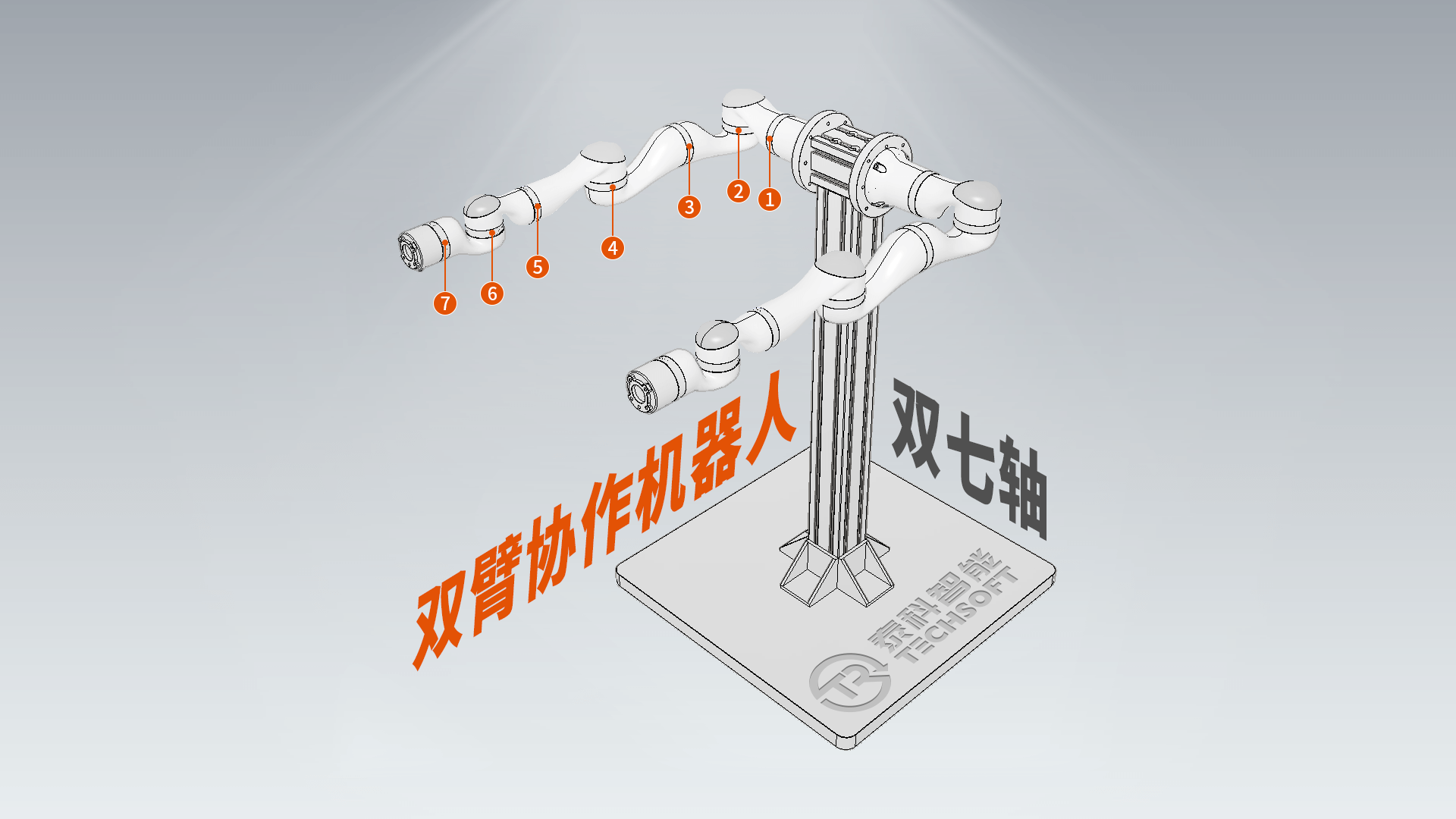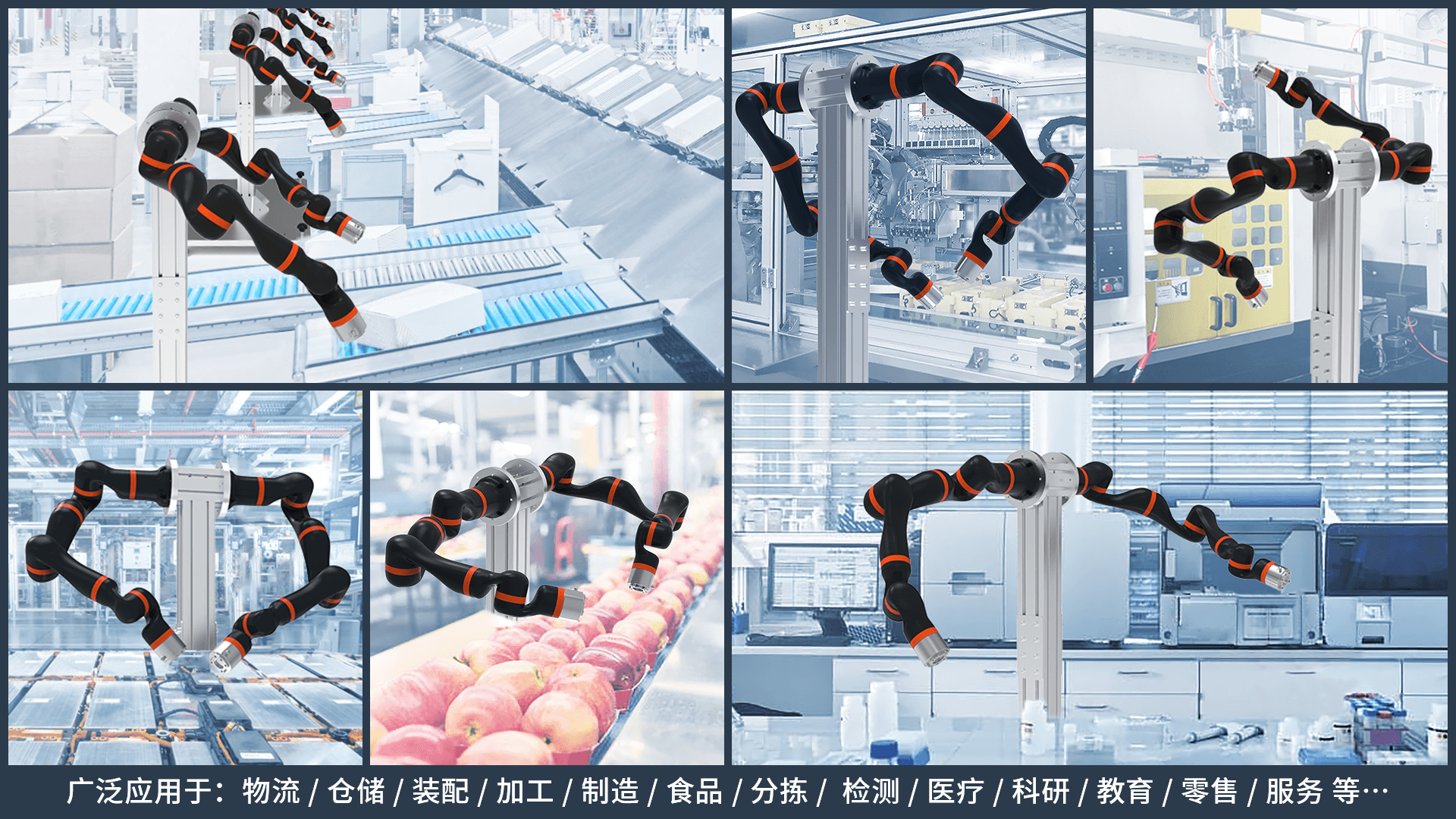Application Scenarios of Dual-Arm Collaborative Robots
Date:2023-05-19The core of dual-arm collaborative robots lies in their dual-arm multi-joint structure and robotic operating system. Each arm features seven highly flexible degrees of freedom, offering greater flexibility and operability than single-arm collaborative robots. Through coordinated operation of both arms, they can mimic human bimanual movements to perform various tasks such as assembly, welding, painting, disassembly, and more. With technological advancements, dual-arm collaborative robots have undergone functional changes, making them a primary production tool in modern industries. They have become a crucial component in manufacturing, widely applied in automotive, aerospace, medical, 3C electronics, logistics, plastics, glass, metal processing, and other fields.
Developed to meet market demands, Tech Robots' dual-arm collaborative robots consist of two seven-axis robotic arms and a main structure, featuring high programmability. Programming allows precise control of the robot's dual arms, enhancing production efficiency and accuracy. These robots can coordinate and control various operations, and additional sensors and end-effectors can be added to achieve multiple functionalities. They are capable of executing complex tasks in an orderly manner and adapting to diverse work environments. For instance, through visual perception, the robot can identify objects to be manipulated, enabling it to perform tasks like assembly, inspection, processing, and services.

With the development of technology and the improvement of people's living standards, robots have become an indispensable part of our daily lives. Dual-arm collaborative robots, with their high programmability and diverse operational capabilities, have emerged as a primary production tool widely applied in various fields. For example, in the manufacturing industry, they assist automobile manufacturers in body and engine assembly; in the aerospace industry, dual-arm collaborative robots are used for assembling and testing components of various spacecraft; in medical settings, they are employed for various surgical procedures. Through mature technology integration and continuous upgrades, dual-arm collaborative robots are increasingly versatile and find extensive applications across various domains.

1.The widespread application of dual-arm collaborative robots in the manufacturing industry is growing.
With increased industrial automation, more companies are adopting these robots for various production tasks, enhancing efficiency by working continuously. They handle not only simple tasks like material handling and part assembly but also complex operations such as welding and painting. Moreover, they can collaborate with human workers to ensure both productivity and process safety.
2.Dual-arm collaborative robots find extensive applications in the medical field.
As medical technology advances, more healthcare institutions are using these robots to assist surgeons in performing precise operations, reducing surgical risks. The convenient operating methods, along with the possibility of remote control, ensure both the safety and cost-effectiveness of surgeries.
3.In the service industry, dual-arm collaborative robots play a crucial role.
With the aging population, there's an increasing demand for assistance to elderly individuals. However, the number of human service personnel is limited. These robots act as tools for service personnel, helping elderly individuals with various daily activities, such as laundry and cleaning. This not only addresses the shortage of service personnel but also improves the quality of life for the elderly.
4. Dual-arm collaborative robots can also be applied in the education sector.
With the rise of online education, students need effective communication with teachers. These robots serve as tools for online education, facilitating better communication between students and teachers. They can be operated remotely to conduct demonstrations, interactive Q&A sessions, and other educational activities, enhancing students' understanding and mastery of knowledge.
5. Dual-arm collaborative robots have widespread applications in environmental cleanliness.
With the intensification of urbanization, the issue of waste disposal in cities becomes more critical. These robots assist in waste cleanup, relieving environmental pressure. They can handle various cleaning tasks, such as road cleaning and sewage treatment. Equipped with sensors and monitoring devices, they assess environmental pollution conditions, providing crucial data support for environmental protection.
In conclusion, dual-arm collaborative robots have become an integral part of modern society, widely used in various fields. They assist in complex tasks, improve production efficiency, reduce costs, and enhance process safety. As dual-arm collaborative robot technology continues to evolve, we can expect more innovations and new application areas, bringing greater convenience and benefits to human society in the future.
Previous Article: Robots are playing a significant role in advancing the new energy industry
Next Article: Compound robots: The next generation of industrial robots.